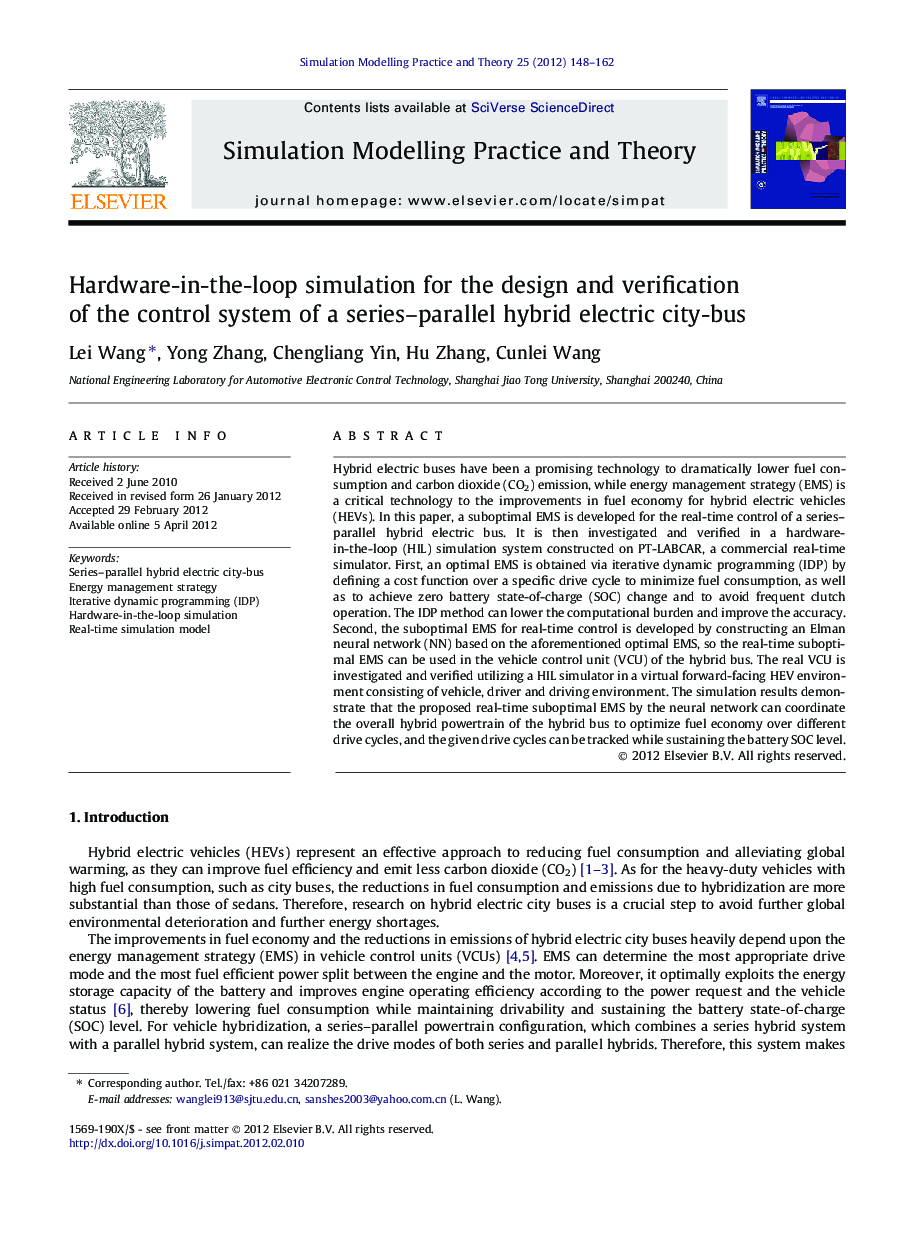| Article ID | Journal | Published Year | Pages | File Type |
|---|---|---|---|---|
| 492632 | Simulation Modelling Practice and Theory | 2012 | 15 Pages |
Hybrid electric buses have been a promising technology to dramatically lower fuel consumption and carbon dioxide (CO2) emission, while energy management strategy (EMS) is a critical technology to the improvements in fuel economy for hybrid electric vehicles (HEVs). In this paper, a suboptimal EMS is developed for the real-time control of a series–parallel hybrid electric bus. It is then investigated and verified in a hardware-in-the-loop (HIL) simulation system constructed on PT-LABCAR, a commercial real-time simulator. First, an optimal EMS is obtained via iterative dynamic programming (IDP) by defining a cost function over a specific drive cycle to minimize fuel consumption, as well as to achieve zero battery state-of-charge (SOC) change and to avoid frequent clutch operation. The IDP method can lower the computational burden and improve the accuracy. Second, the suboptimal EMS for real-time control is developed by constructing an Elman neural network (NN) based on the aforementioned optimal EMS, so the real-time suboptimal EMS can be used in the vehicle control unit (VCU) of the hybrid bus. The real VCU is investigated and verified utilizing a HIL simulator in a virtual forward-facing HEV environment consisting of vehicle, driver and driving environment. The simulation results demonstrate that the proposed real-time suboptimal EMS by the neural network can coordinate the overall hybrid powertrain of the hybrid bus to optimize fuel economy over different drive cycles, and the given drive cycles can be tracked while sustaining the battery SOC level.
